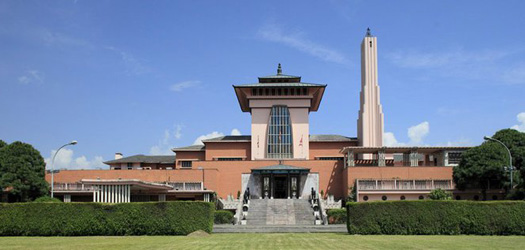| |
 Our Country - Nepal
Our Country - Nepal
 |
NEPAL
PACOUNTRY OVERVIEW

Location and
Physiographic
1.
Nepal is located between longitude 80o4' and 88o12' and between latitude
26o22' and 30o27'. It borders the Peoples Republic of China in the
north and India in the east, south and west. Nepal has a breadth east
to west of 885 km, a mean width of 193 km and covers an area of 147,181
sq km. Topographically the Country is divided into three bands running
the full breadth and comprising the Terai (southern plains), the Mid-Hills
and the Mountains. The Mid-Hills and Mountains together represent
83% of the total area of Nepal.
2. The hill areas are geologically very young and active, and are
affected by a constant tectonic uplifting accompanied by down-cutting
of the river systems. This action on the predominately soft and deeply
weathered nature of the rock has produced extremely rugged topography
with local differences in elevation varying from 500 metres to 3,500
metres and rising to 8,848 metres (Mount Everest) above mean sea level.
The resulting steep, unstable and highly erodible slopes are divided
into many gullies and small valleys and the provision and maintenance
of even basic infrastructure in such extreme conditions is both difficult
and costly.
3. The Country is administered through five development regions: eastern,
central, western, mid-western and far-western. These are further subdivided
into 14 zones, 75 districts, 58 municipalities, and 3,914 Village
Development Committees. Although the declared policy of Government
is to decentralise development responsibility to the local level,
this is proving difficult in practice due, in part, to the lack of
local capability and hence, poor resource mobilisation.
| |
 Climate
- Nepal Climate
- Nepal
 |
Clomate
4. Nepal lies in the monsoon belt but the climate is dictated by altitude
and varies from sub-tropical on the Terai plains to alpine and tundra
in the Mountains. Annual rainfall differs from place to place ranging
from less than 250 mm in the Mountains to more than 4,000 mm in the
Mid-Hills (near Pokhara). Most of the precipitation occurs during
the period June to September and is concentrated in the Mid-Hills
and the Terai. The high concentration during the monsoon months results
in flooding, heavy erosion and triggers landslips over a wide area.
| |
 Demography - Nepal Demography - Nepal
 |
Demography
5. The 2001 census recorded a population level of 23.2 million. Of
this figure, some 11.20 million are based in the Mid-Hills, some
2.00 million are in the Mountains, and the remaining 10 million are
in the Terai. Outside the Kathmandu Valley, the eastern and central
Terai has the highest population density ranging from 300 - 1,100
per sq km. Density in the Kathmandu Valley lies between 1,100 and a
maximum of 1,710 in Kathmandu itself.
6. Major changes have taken place and are continuing to take place
in the distribution of population among the various parts of the
Country. These changes are largely intra-regional and involve a
pronounced shift of population from the Mountains and Mid-Hills to
the Terai. Zones with the largest exodus have been the eastern
Mountains and Mid-Hills followed by the western and central
Mid-Hills. In addition to these movements, there is a continuing
migration from the rural areas to Kathmandu whose population has
increased threefold over the past 5 years to some 1000,000.
| |
 Royal Family
Royal Family
 |

| |
Royal family of Nepal |
|
| |
|
|
| |
|
|
| |
|
|
| |
King
Birendra |
|
| |
|
|
| |
|
|
*
More about of Nepal
Click Here 198 KB
(203,264 bytes) download doc file.
|